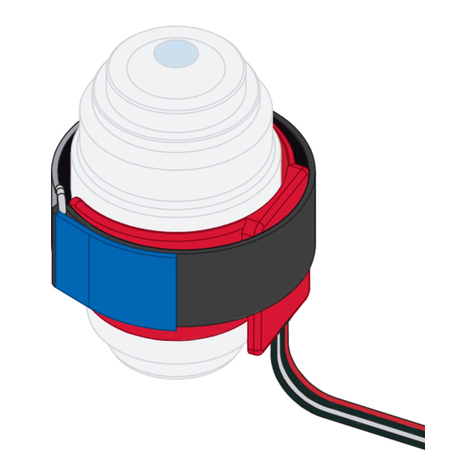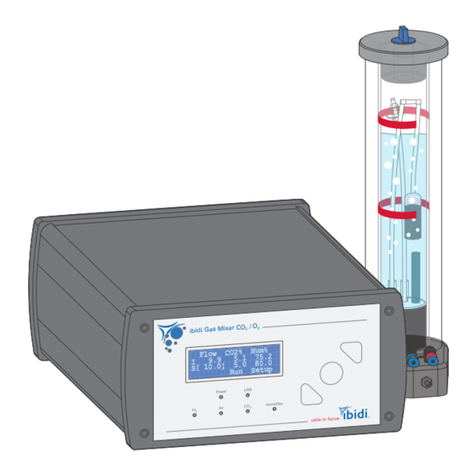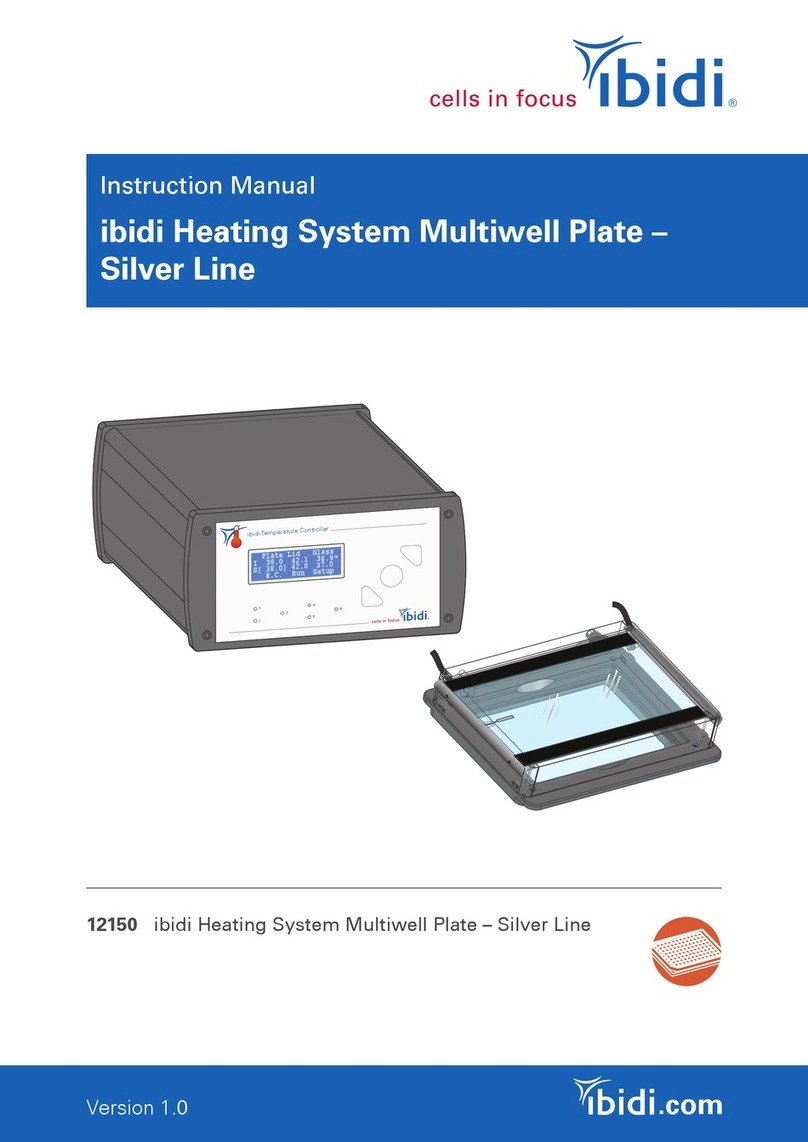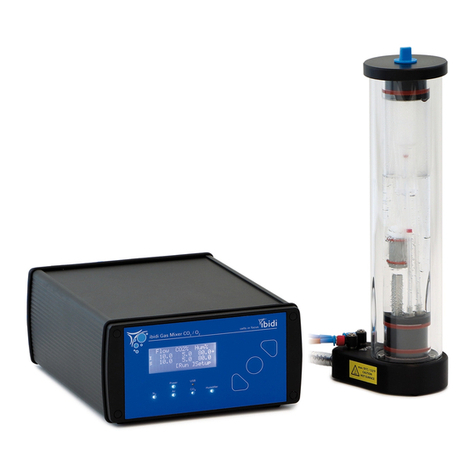
Instructions µ–Slide VI 0.4
The ibidi product family is comprised of a variety of µ–Slides and µ–Dishes, which have all
been designed for high–end microscopic analysis of fixed or living cells. The high optical
quality of the material is similar to that of glass, so you can perform all kinds of fluorescence
experiments with uncompromised resolution and choice of wavelength.
The convenient six channel format of the µ–Slide VI 0.4 is ideal for static cell cultivation and
the application of standard immunofluorescence protocols, like treatment, staining, and mi-
croscopy of living or fixed cells. Alternatively, the µ–Slide VI 0.4 can be connected to a pump
and enables you to observe cells under flow conditions.
Material
ibidi µ–Slides, µ–Dishes, and µ–Plates are made of a plas-
tic that has the highest optical quality. The polymer cov-
erslip on the bottom exhibits extremely low birefringence
and autofluorescence, similar to that of glass. Also, it is
not possible to detach the bottom from the upper part.
The µ–Slides, µ–Dishes, and µ–Plates are not autoclavable,
since they are only temperature–stable up to 80°C/175°F.
Please note that gas exchange between the medium and
incubator’s atmosphere occurs partially through the poly-
mer coverslip, which should not be covered.
Optical Properties ibidi Polymer Coverslip
Refractive index nD(589 nm) 1.52
Abbe number 56
Thickness No. 1.5 (180 µm)
Material polymer coverslip
Please note! The ibidi polymer coverslip is compatible
with certain types of immersion oil only. A list of suit-
able oils can be found on page 3.
Shipping and Storage
The µ–Slides, µ–Dishes and µ–Plates are sterilized and
welded in a gas-permeable packaging. The shelf life under
proper storage conditions (in a dry place, no direct sun-
light) is listed in the following table.
Conditions
Shipping conditions Ambient
Storage conditions RT (15-25°C)
Shelf Life of Different Surfaces
ibiTreat, Glass Bottom, ESS 36 months
Collagen, Poly-Lysine 18 months
Fibronectin 4 months
Geometry of the µ–Slide VI 0.4
The µ–Slide VI 0.4 provides a standard slide format accord-
ing to ISO 8037/1. The lateral adapter to adapter distance
of 9 mm (like 96 well plates) allows using multichannel
pipettes.
Dimensions
Number of Channels 6
Channel volume 30 µl
Channel length 17 mm
Channel width 3.8 mm
Channel height 0.4 mm
Adapters female Luer
Volume per reservoir 60 µl
Growth area 0.6 cm2per channel
Coating area using 30 µl 1.2 cm2per channel
Bottom matches coverslip No. 1.5
µ–Slide Surfaces
Depending on the type of cells and the special application
you are using, you will need µ–Slides with different sur-
faces. If you do not require any special adhesion molecules
for your application, the best choice will be ibiTreat, a tis-
sue culture treated surface.
The uncoated µ–Slide is manufactured from hydrophobic
plastic. For the cultivation of most cell lines, it is indis-
pensable to treat the uncoated µ–Slide with biopolymers,
which mediate cell adhesion and growth.
µ–Slide VI 0.4 Page 1 Version 3.0 (2015-12-10)




























